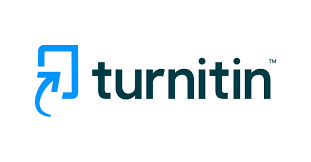ANALOGUE SAUSAGE FORMULATION OF TEMPEH-WHITE OYSTER MUSHROOMS (PLEUROTUS OSTREATUS) WITH THE ADDITION OF CARRAGEENAN
Abstract
Sausage is a food product that is processed as a variety of food. Tempeh and white oyster mushroom (Pleurotus ostreatus) contain many nutrients needed by the body. In addition, carrageenan also contributes to the nutritional content of the product. This research was conducted to determine the chemical and sensory characteristics of sausage that are rich in fiber and received by consumers. This study used completely randomized design method (CRD) which consists of two factors. The first factor was the substitution of tempeh and white oyster mushroom with a ratio of 50:100; 75:75; 100:50. The second factor was the addition of carrageenan, including 4, 6 and 8 g. The chosen formulation was on the treatment of a comparison of 75 g of tempehh and 75 g of white oyster mushroom with the addition 6 g of carrageenan. The chemical properties of the analogue sausage was:14% of protein, 11.22% of fat, 44.24% of moisture, 6.02% of crude fiber, 2.37% of ash and 27.29% of total cabohydrate. While for sensory test color was 2.96, flavour tempeh 2.45, flavour of mushroom 1.74, texture of 2.55 and overall preference 2.45.
Keywords
Full Text:
PDFReferences
AOAC, 1995. Official Methods of Analysis of The Association of Official Agriculture Chemist 16th. Arlington, Virginia, USA: The Association of Official Analytical Chemist, Inc.
Apriyantono, A., Fardiaz, D., Puspitasari N L., Sedarnawati, Y., dan Budianto, S., 1989. Petunjuk Laboratorium Analisis Pangan. Bogor: Pusat Antar Universitas, Institut Pertanian Bogor.
Astuti, N. P., 2009. Sifat Organolaptik Tempe Kedelai yang Dibungkus Plastik, Daun Pisang dan Daun Jati. Karya Tulis Ilmiah. Surakarta: Fakultas Ilmu Kesehatan, Universitas Muhammadiyah Surakarta.
Baedhowie, M. Dan Pranggonowati, 1982. Petunjuk Praktek Pengawasan Mutu Hasil Pertanian. Jakarta: Departemen Pendidikan dan Kebudayaan.
Bastian, F. E., Ishak, A. B., Tawali, M., dan Bilang, 2013. Daya Terima Dan Kandungan Zat Gizi Formula Tepung Tempe Dengan Penambahan Semi Refined Carrageenan (SRC) Dan Bubuk Kakao. Jurnal Aplikasi Teknologi Pangan. 2(1): 5-9.
BBIA, 2014. Hasil Analisa Jamur Tiram Segar. No. 3358/ LHU/Bd/ABICAL.1/IV/2014.
Cahyadi, 2006. Kedelai Khasiat dan Teknologi. Bandung: Bumi Aksara.
Cahyana, Y. A., Muchrodji, dan Bakrun, M., 1999. Jamur Tiram: Pembibitan, Pembudidayaan, Analisis Usaha. Jakarta: Pustaka Grafikatama.
Djarijah, N. M., dan Djarijah, A. S., 2001. Budidaya Jamur Tiram (Pembibitan Pemeliharaan dan Pengendalian Hama Penyakit). Yogyakarta: Kanisius.
Faridah, D. N., Kusumaningrum, H. D., Wulandari, N., dan Indrasti, D., 2006. Analisa Laboratorium. Bogor: Departemen Ilmu dan Teknologi Pangan: IPB.
Haron, H., Ismail, A., Azlan, A., Shahar S., dan Peng, L. S., 2009. Daidzein and Genestein Contents in Tempeh and Selected Soy Products. Food Chemistry. 115(4): 1350-1356.
Hernawati., W., Manalu, A., Suprayogi dan Astuti, DA., 2013. Suplementasi Serat Pangan Karagenan dalam Diet untuk Memperbaiki Parameter Lipid Darah Mencit Hiperkolesterolemia. Makara Seri Kesehatan. 1(17):1-9.
Hudaya, R. N. 2008. Pengaruh Penambahan Tepung Rumput Laut Untuk Peningkatan Kadar Iodium dan Serat Pangan Pada Tahu Sumedang. [Skripsi]. Bogor: Fakultas Perikanan dan Ilmu Kelautan, IPB.
Kartika, B., Hastuti P. dan Supratno W., 1988. Pedoman Uji Inderawi Bahan Pangan. Yogyakarta : Pusat Antar Universitas Pangan dan Gizi UGM.
Karyani, S., 2013. Analisis Kandungan Foodgrade Pada Karagenan dari Ekstraksi Rumput Laut Hasil Budidaya Nelayan Sram Bagian Barat. Bimafika. 4: 499-506.
Larasati, K., Patang, Lahming, 2017. Analisis Kandungan Kadar serat dan Karakteristik Sosis Tempe dengan Fortifikasi Karagenan Serta penggunaan Tepung Terigu Sebagai Bahan Pengikat. Jurnal Pendidikan Teknologi Pertanian. 3(1): 67-77.
Sabudi, S., 2016. Sosis Berbahan Dasar Tempe Kedelai. Jurnal Gastronomi Indonesia. 4(1). Bali : Sekolah Tinggi Pariwisata Nusa Dua Bali.
Schneider, I., Kressel, G., Meyer, A., krings, U., berger, R. G., and Hahn, A., 2011. Lipid Lowering Effect of Oyster Mushroom (Pleorotus ostreatus) in Humans. Journal of Functional Food. 3(1): 17—24.
Sudarmadji, S., Haryono, B., dan Suhardi, 1997. Prosedur Analisa untuk Bahan Makanan dan Pertanian. Yogyakarta: Liberty.
Suryati, I, 2010. Desain Proses Pengolahan Keripik Jamur Tiram Putih (Pleurotus ostreatus) dengan Menggunakan Vacuum Frying. [Skripsi]. Bogor: Fakultas Teknologi Pertanian, Institut Pertanian Bogor.
Widyastuti, N. dan Istiani, S., 2004. Optimasi Proses Pengeringan Tepung Jamur Tiram Putih (Pleurotus ostreatus). Jurnal Ilmu Kefarmasian Indonesia. 2(1): 1-4.
Winarno, F. G., 1997. Pangan Gizi Teknologi Dan Konsumen. Jakarta: Gramedia Pustaka Utama.
Witanto, B., 2013. Pembuatan Sosis Jamur Tiram Putih (Pleurotus ostreatus Jacq.) Dan Tepung Rebung Dengan Kombinasi Tepung Tapioka dan Karagenan (Eucheuma cottonii Doty). [Skripsi]. Yogyakarta: Fakultas Teknobiologi, UAJY.
DOI: http://dx.doi.org/10.33512/fsj.v1i1.6194
Refbacks
- There are currently no refbacks.

This work is licensed under a Creative Commons Attribution-ShareAlike 4.0 International License.











